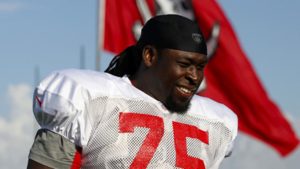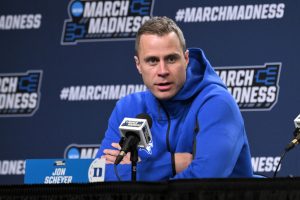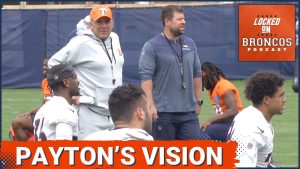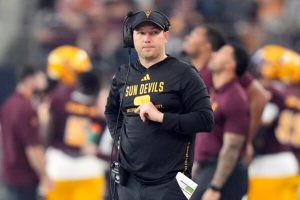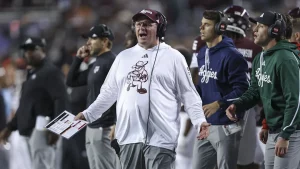
In the dynamic and ever-shifting landscape of college basketball, recruiting and transfers often define the fortunes of programs looking to rise to the next level. The University of Alabama, a school with burgeoning basketball ambitions under head coach Nate Oats, recently made headlines—not for a signing, but rather for stepping back from a coveted transfer target. This decision came on the heels of shocking news emanating from the NBA Draft that has had ripple effects throughout the college basketball world. What seemed like a straightforward pursuit of a top-tier transfer suddenly took a backseat as Alabama reassessed its roster plans, strategy, and future outlook.
The story begins with Alabama’s aggressive approach toward bolstering its squad through the transfer portal. Over recent years, the transfer portal has become a critical avenue for programs to gain immediate impact players, circumventing the longer development cycle typical of freshmen recruits. Alabama’s basketball program has been no stranger to this trend, frequently tapping into the portal to find players who can make an instant difference on the court. Their goal is clear: to compete at the highest level in the Southeastern Conference (SEC) and make deeper runs in the NCAA Tournament.
Among the names linked to Alabama’s transfer radar was one of the most sought-after players available—a top transfer target whose blend of skill, athleticism, and experience would have instantly elevated Alabama’s backcourt or frontcourt, depending on the position he plays. For months, sources indicated Alabama was in advanced talks, with expectations high that this player would soon don the crimson and white. The addition would have sent a strong message to the SEC and the nation: Alabama is serious about becoming a basketball powerhouse.
However, the landscape shifted dramatically with the recent NBA Draft news. The league’s annual draft is always a source of excitement, revealing the next generation of professional talent and altering perceptions about players still in college or entering the draft early. This particular draft brought with it unexpected developments, including surprising early entries, withdrawals, and the announcement of a star’s intention to remain in college longer than anticipated. These moves are significant because they affect not only NBA rosters but also the availability of top talent in college basketball.
One of the most impactful revelations was that the star player Alabama was eyeing as a transfer is now likely to remain in the NBA Draft or has already declared, signaling the end of his collegiate eligibility or transfer prospects. This sudden change altered Alabama’s calculus dramatically. Without the possibility of adding this particular talent to their roster, the coaching staff and administration took a step back to reconsider their options and the team’s direction.
This decision to step away was not taken lightly. It underscores the delicate balance college programs must maintain between recruiting and responding to an evolving talent pool. For Alabama, it meant recalibrating their plans to focus more heavily on developing existing players, recruiting freshmen, or targeting other transfer candidates who fit their system and needs. The program’s staff also indicated that patience and prudence would guide their next moves, emphasizing building a cohesive team culture and not rushing to fill a gap with a high-profile but uncertain transfer.
The news also highlights the broader challenge that all college basketball programs face in today’s era: the fluidity and unpredictability of player movement, especially with the transfer portal and the early NBA Draft declarations. Where once programs could confidently count on players transferring or returning for additional seasons, now decisions are more fluid, influenced by draft projections, NIL (Name, Image, Likeness) opportunities, and personal goals. For Alabama, a school that has made significant strides in recent years, it’s a reminder that even the best-laid plans must adapt quickly.
Furthermore, the decision is indicative of Alabama’s long-term vision. Coach Nate Oats and his staff have demonstrated a commitment to sustainable program growth—building a team that can compete year after year rather than chasing quick fixes. By stepping away from this transfer target, Alabama signals that while they are eager to improve immediately, they are not willing to compromise their core values, roster balance, or team chemistry. This approach will likely serve them well as they continue to develop players and recruit talent aligned with their style of play.
The reaction from fans and analysts has been mixed but generally understanding. Some expressed disappointment at losing out on a player who could have brought instant star power and elevated Alabama’s chances in the SEC. Others appreciate the program’s strategic decision to focus on what they can control and maintain a stable foundation. This kind of transparency and patience could foster stronger team dynamics and better results over the long haul.
The news also sparked conversations about how the NBA Draft and the transfer portal increasingly intersect in college basketball’s ecosystem. Players weighing their options must navigate not only the decision to transfer or stay but also the prospects of turning professional. This complexity influences how programs scout and recruit, requiring constant vigilance and adaptability. Alabama’s experience is a microcosm of this larger trend, highlighting the importance of agility in college basketball management.
Looking ahead, Alabama’s basketball program remains poised for success despite this setback. The coaching staff has a strong track record of player development, having cultivated talent into NBA prospects in recent years. The team’s returning core has shown significant promise, and new recruits coming into the fold add depth and potential. Without the transfer target in question, the focus now shifts to maximizing what they have and making smart acquisitions as the portal continues to evolve.
The program’s leadership also emphasized that stepping away from this particular transfer pursuit does not mean they are inactive in the transfer market. Alabama continues to evaluate other prospects who can complement the team’s strengths and contribute to its goals. The transfer portal remains a vital resource, and the staff will leverage their recruiting networks and scouting insights to find the best fits available.
In the grand scheme, this episode serves as a lesson in the realities of modern college basketball recruiting. The intersection of the transfer portal, NBA Draft decisions, and NIL opportunities creates a highly competitive and sometimes unpredictable environment. Success depends not only on talent acquisition but also on timing, fit, and adaptability. Alabama’s decision to step back rather than rush reflects an understanding of these complexities and a commitment to thoughtful program building.
Ultimately, Alabama’s journey in this recruiting cycle will be closely watched. Fans and analysts alike will be eager to see how the team responds and whether alternative transfers or incoming freshmen can fill the void left by the top transfer target’s unavailability. The coaching staff’s approach will likely emphasize cohesion, player development, and a clear identity—key components for sustained success.
As for the player whose draft news shifted the landscape, his professional future now takes center stage, and Alabama’s basketball story continues without him. This moment underscores the interconnected nature of basketball at the college and professional levels, where a single draft announcement can reverberate through recruiting decisions and team strategies.
In conclusion, Alabama’s choice to step away from a top transfer target after shocking NBA Draft news demonstrates the fluid and complex nature of college basketball today. It highlights the importance of flexibility, patience, and strategic vision in building a program capable of sustained excellence. While the immediate impact of losing out on a high-profile transfer is felt, the long-term benefits of a carefully constructed team and culture may well outweigh the short-term disappointment. Alabama remains a team on the rise, ready to adapt and compete as the landscape continues to evolve.
